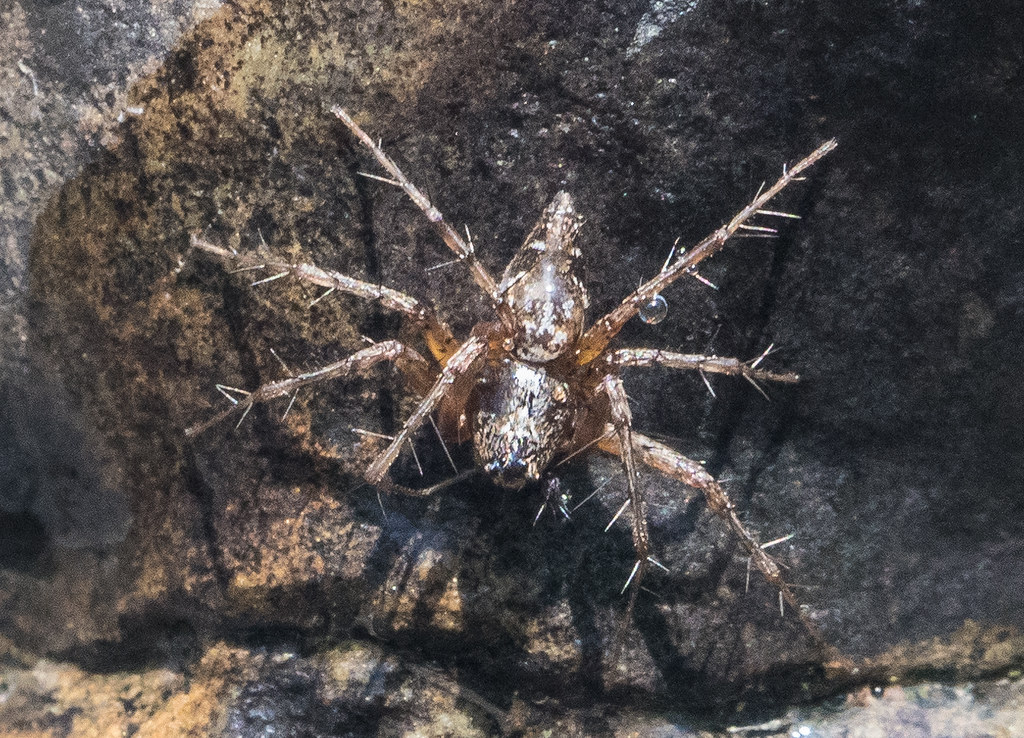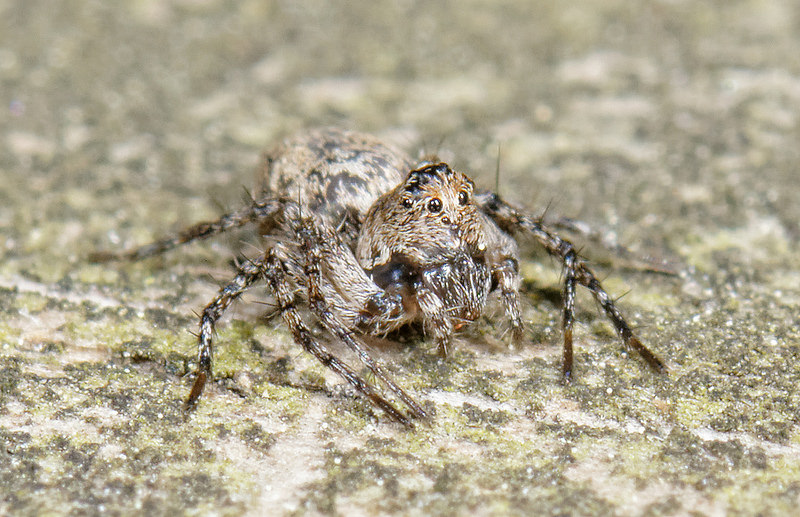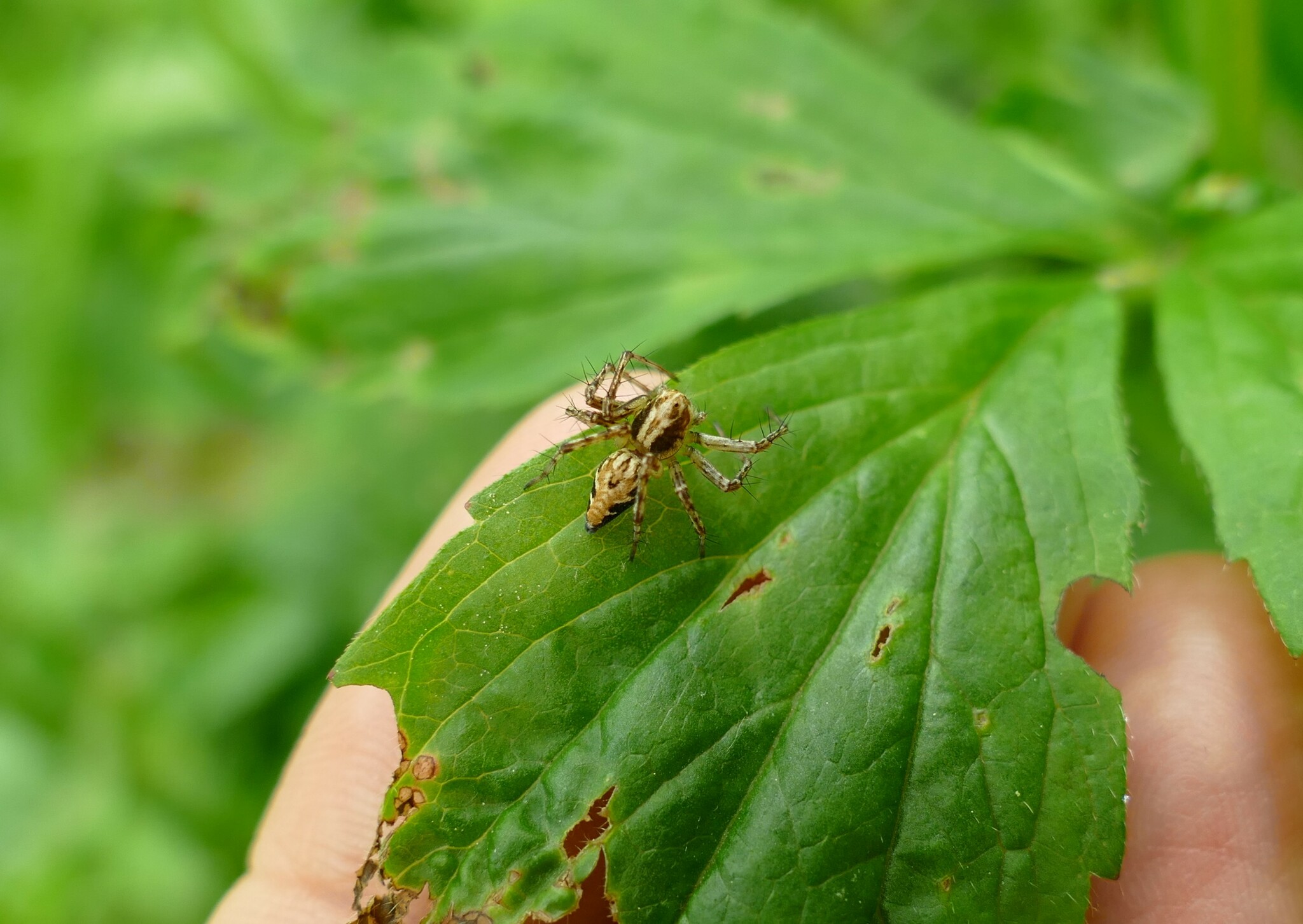Map Snapshot





5 Records
Seasonality Snapshot
Source: Wikipedia
| Oxyopes scalaris | |
|---|---|

| |
| Scientific classification | |
| Domain: | Eukaryota |
| Kingdom: | Animalia |
| Phylum: | Arthropoda |
| Subphylum: | Chelicerata |
| Class: | Arachnida |
| Order: | Araneae |
| Infraorder: | Araneomorphae |
| Family: | Oxyopidae |
| Genus: | Oxyopes |
| Species: | O. scalaris
|
| Binomial name | |
| Oxyopes scalaris Hentz, 1845
| |

Oxyopes scalaris, the western lynx spider, is a species of lynx spider in the family Oxyopidae. It is found in North America.[1][2][3][4] A study based in Washington found that this species reaches adulthood and is most active in spring and early summer.[5] They are considered beneficial in orchards.[6]
Behavior
[edit]Similar to wolf spiders and jumping spiders, western lynx spiders are active hunters that are fast runners and leapers with good vision. Rather than hunting on the ground, they often lie in wait to capture prey on plants, trees, and bushes. Their long, spiny bristles form a “basket-like” cage that may assist in capturing prey and providing the spider with some protection. [7]
They don’t spin webs, but use silk for other purposes including safety lines and their egg sacks.
References
[edit]- ^ "Oxyopes scalaris Report". Integrated Taxonomic Information System. Retrieved 2019-09-25.
- ^ "Oxyopes scalaris". GBIF. Retrieved 2019-09-25.
- ^ "Oxyopes scalaris". NMBE World Spider Catalog. Retrieved 2019-09-25.
- ^ "Oxyopes scalaris species Information". BugGuide.net. Retrieved 2019-09-25.
- ^ Miliczky, Eugene R.; Horton, David R.; Calkins, Carrol O. (2008). "Observations on phenology and overwintering of spiders associated with apple and pear orchards in south-central Washington". Journal of Arachnology. 36 (3): 565–573. doi:10.1636/T07-29.1. ISSN 0161-8202. S2CID 73518332.
- ^ Miliczky, E.R.; Horton, D.R. (June 2005). "Densities of beneficial arthropods within pear and apple orchards affected by distance from adjacent native habitat and association of natural enemies with extra-orchard host plants". Biological Control. 33 (3): 249–259. Bibcode:2005BiolC..33..249M. doi:10.1016/j.biocontrol.2005.03.002.
- ^ https://www.missoulabutterflyhouse.org/western-lynx-spider-oxyopes-scalaris-2/, Western Lynx Spider (Oxyopes scalaris), “Missoula Butterfly House & Insectarium”, June 18, 2021
External links
[edit] Media related to Oxyopes scalaris at Wikimedia Commons
Media related to Oxyopes scalaris at Wikimedia Commons



